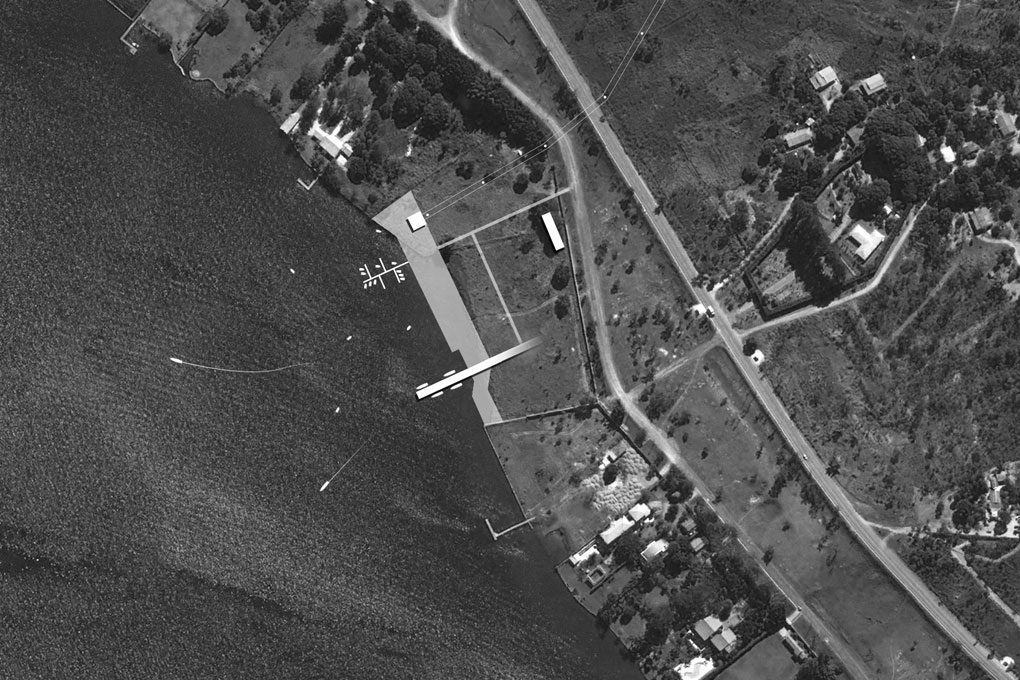

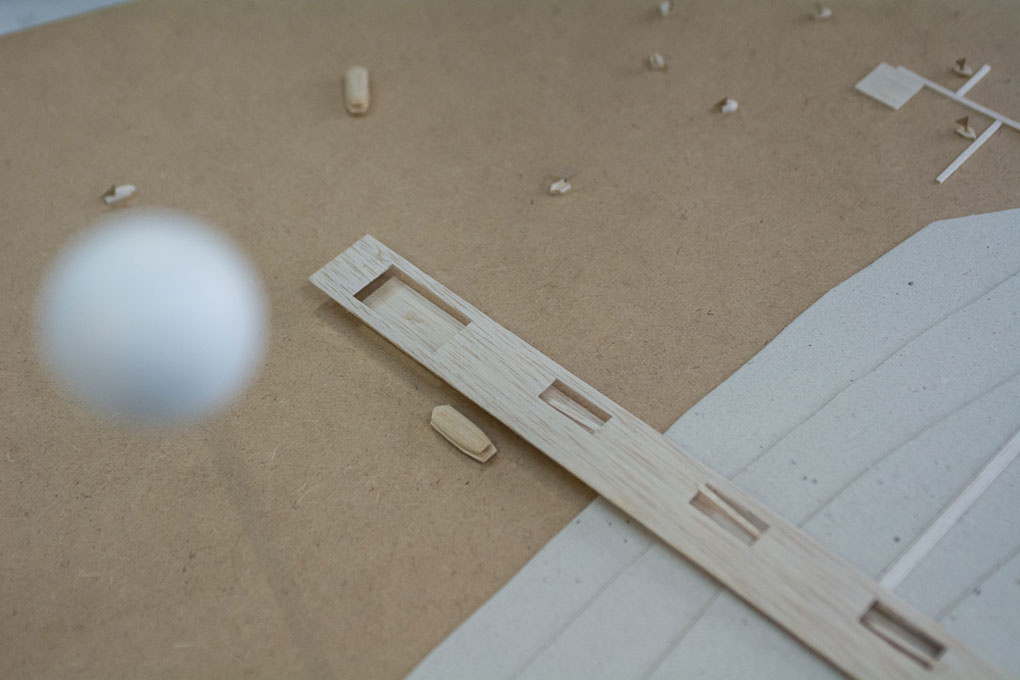
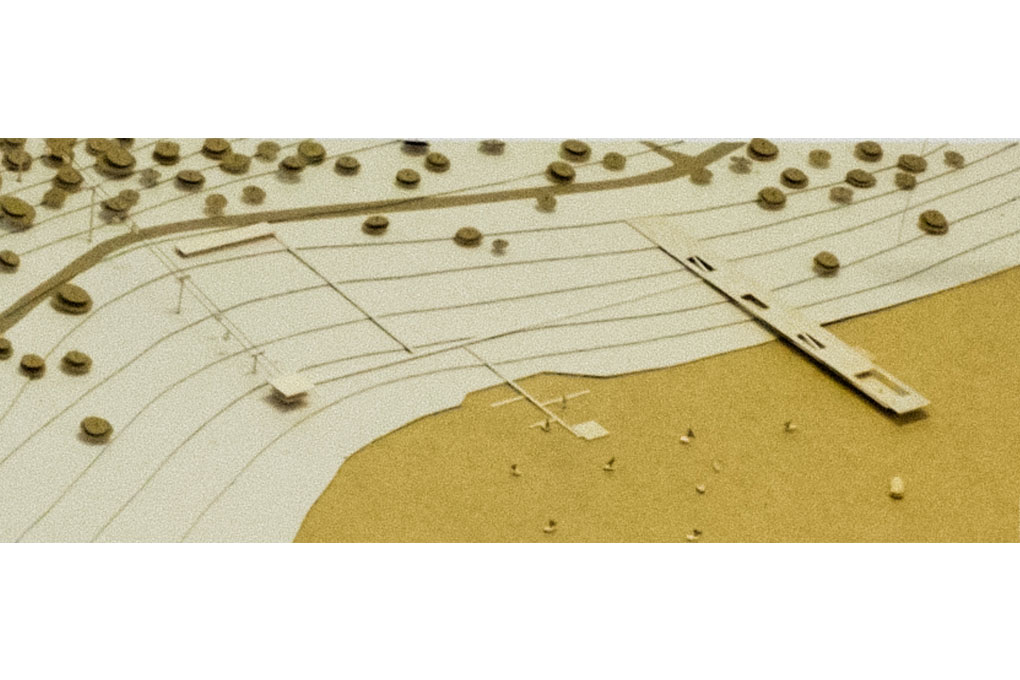
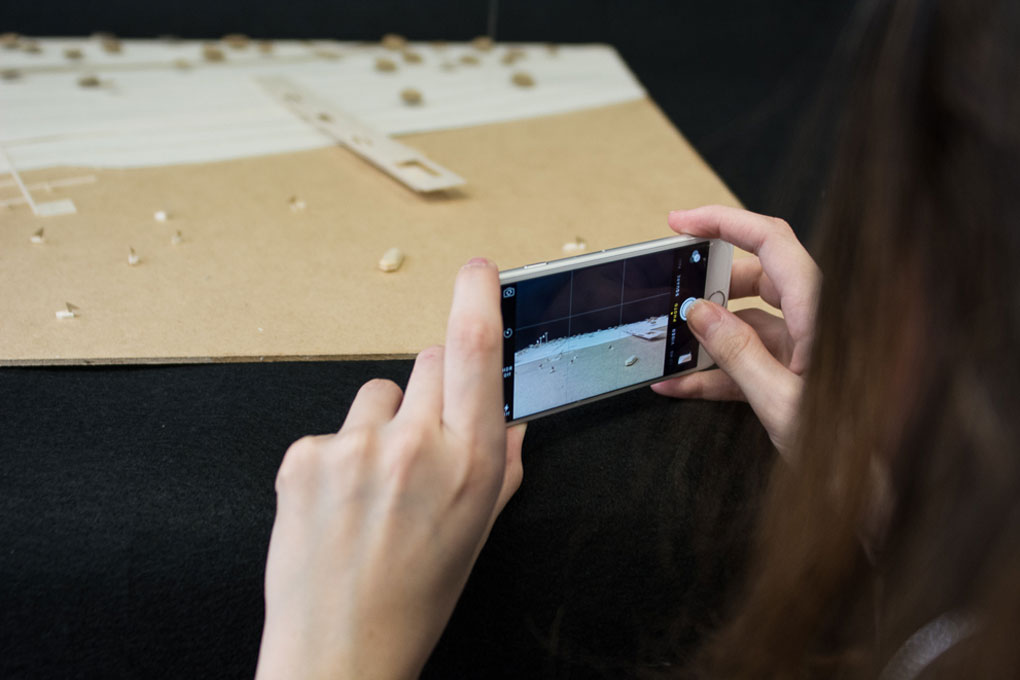

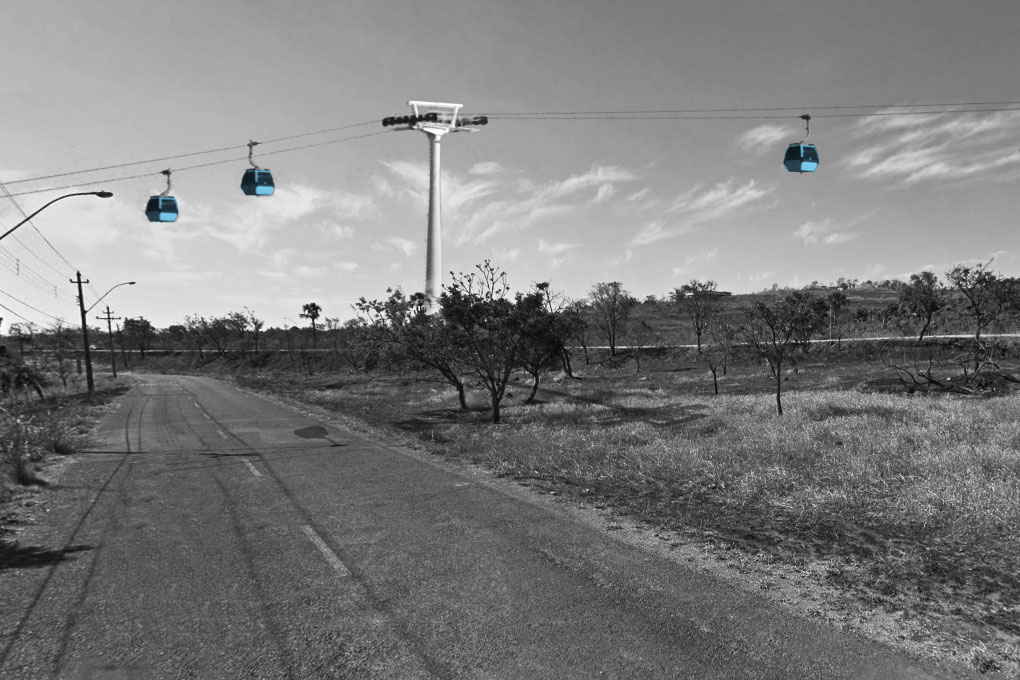
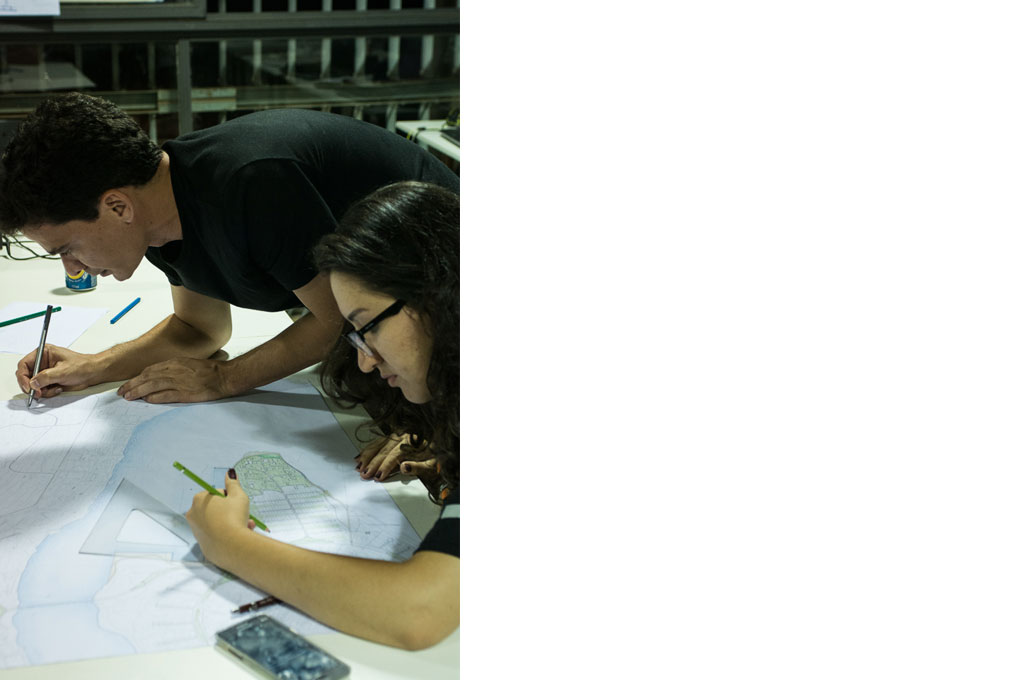
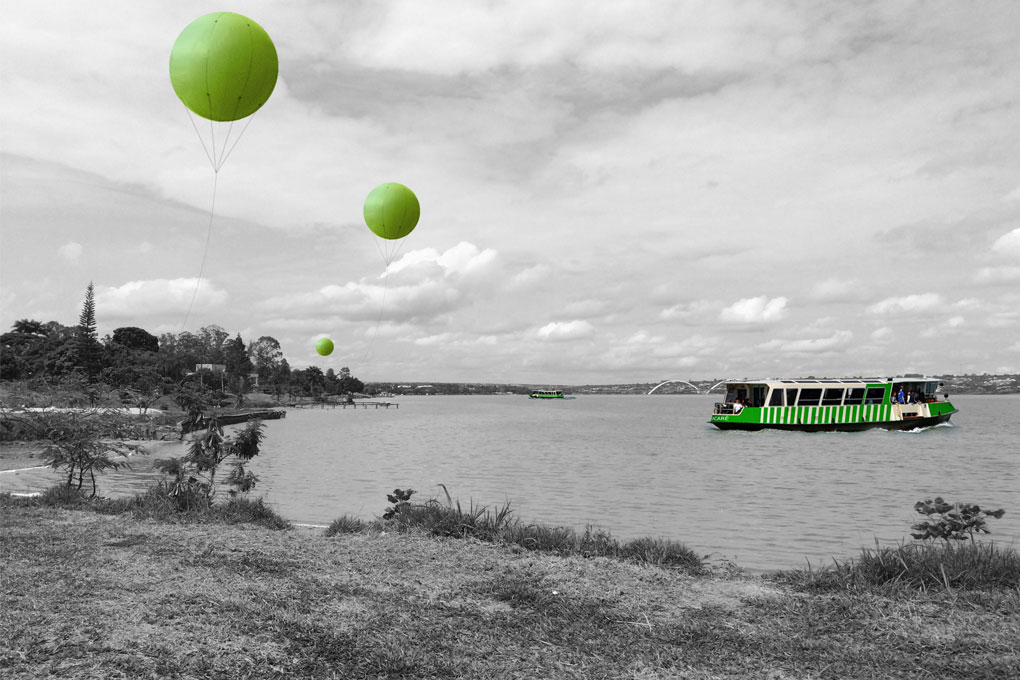

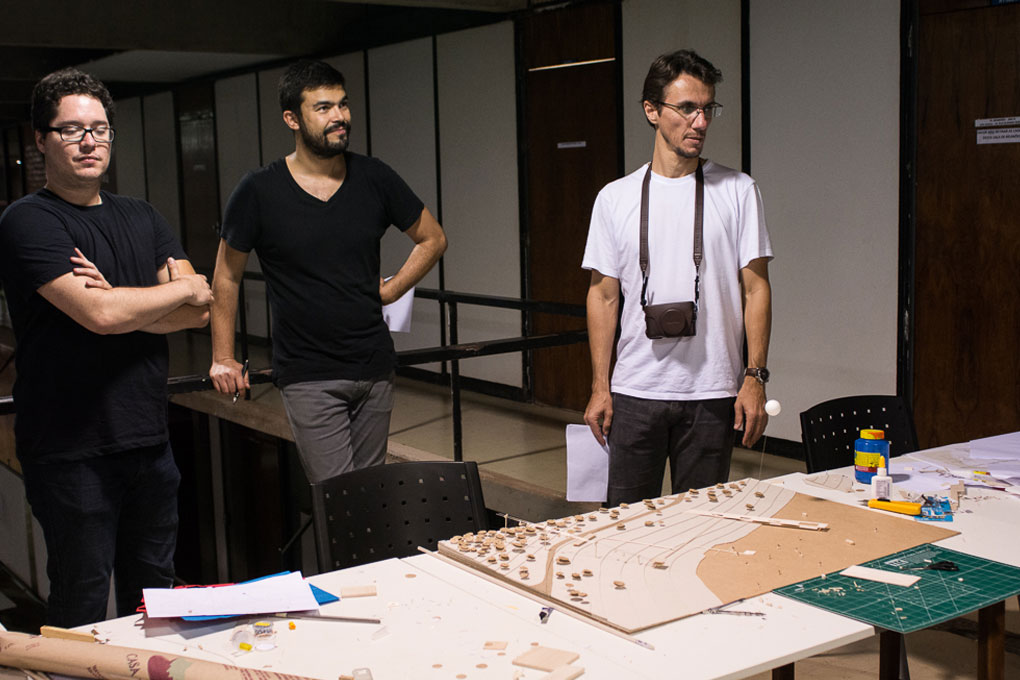
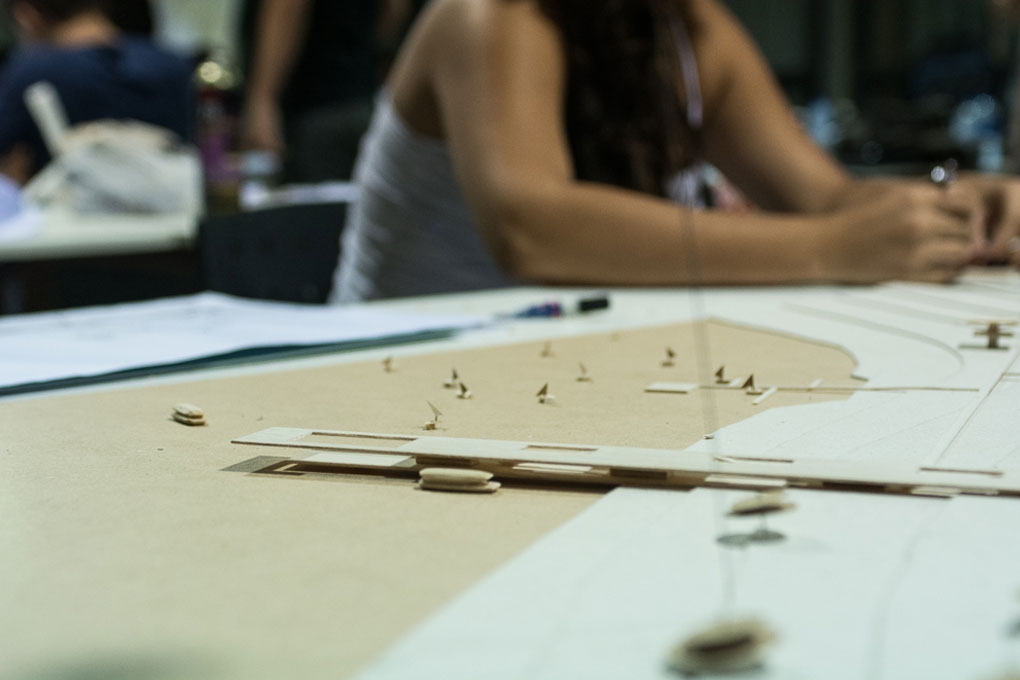
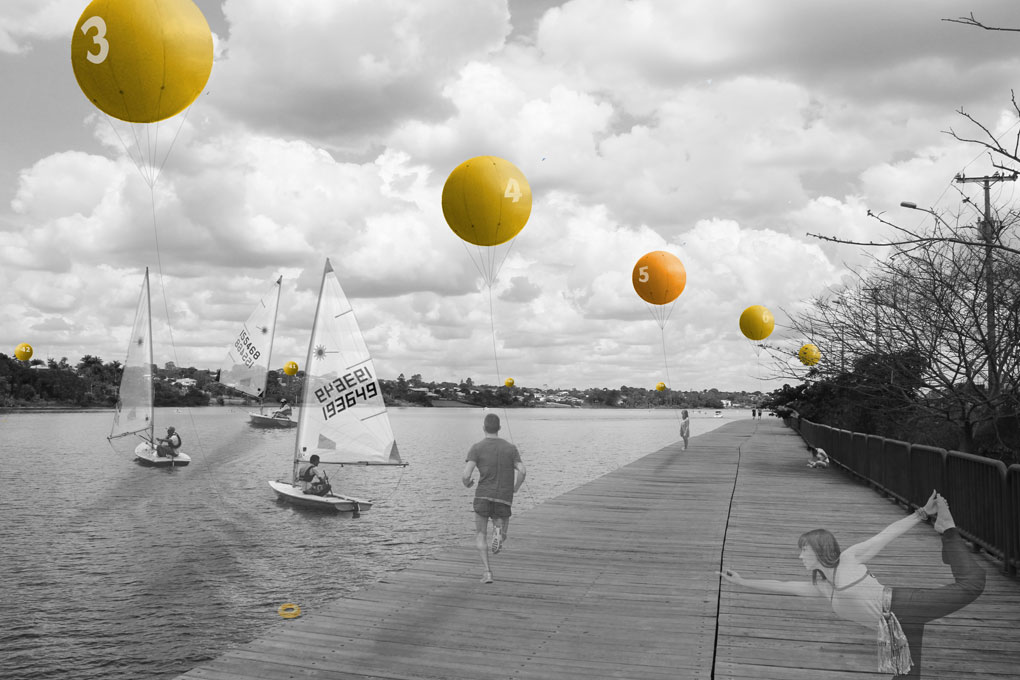
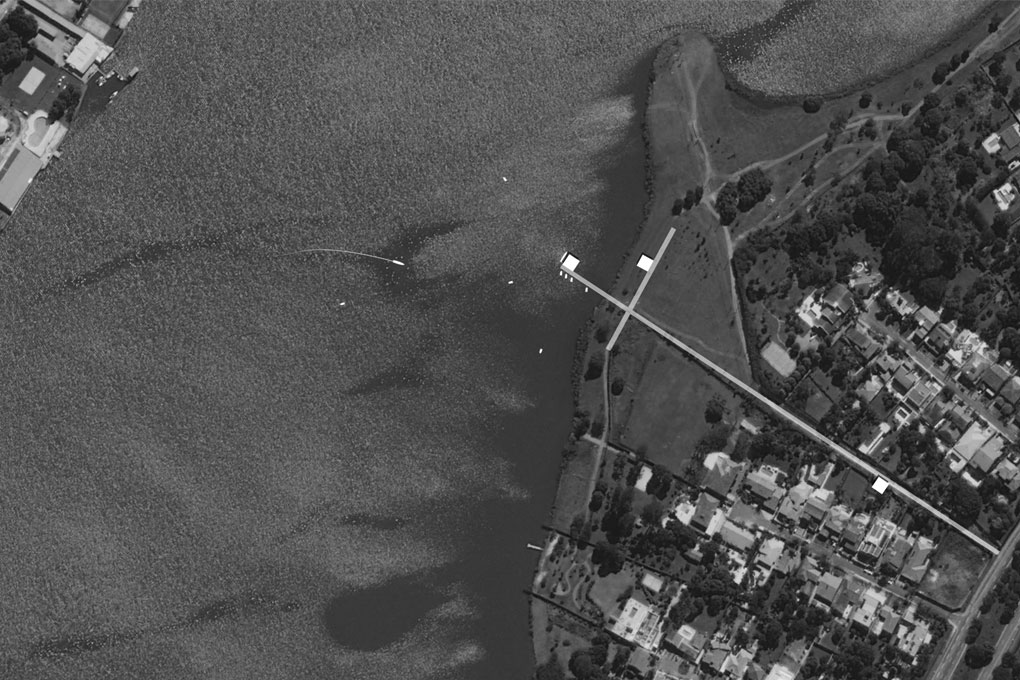
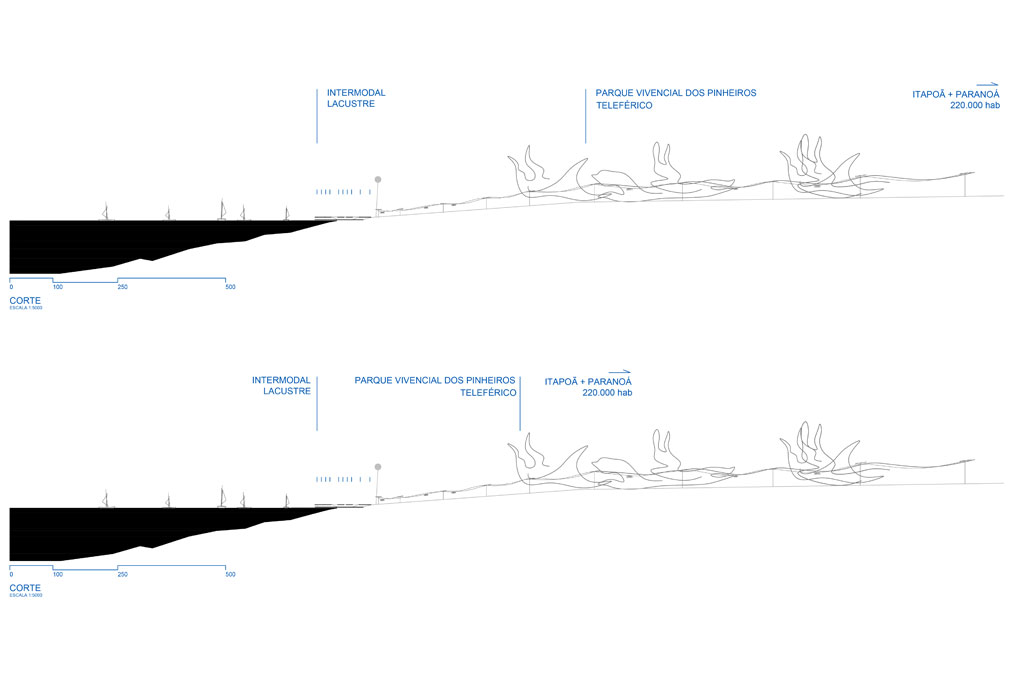
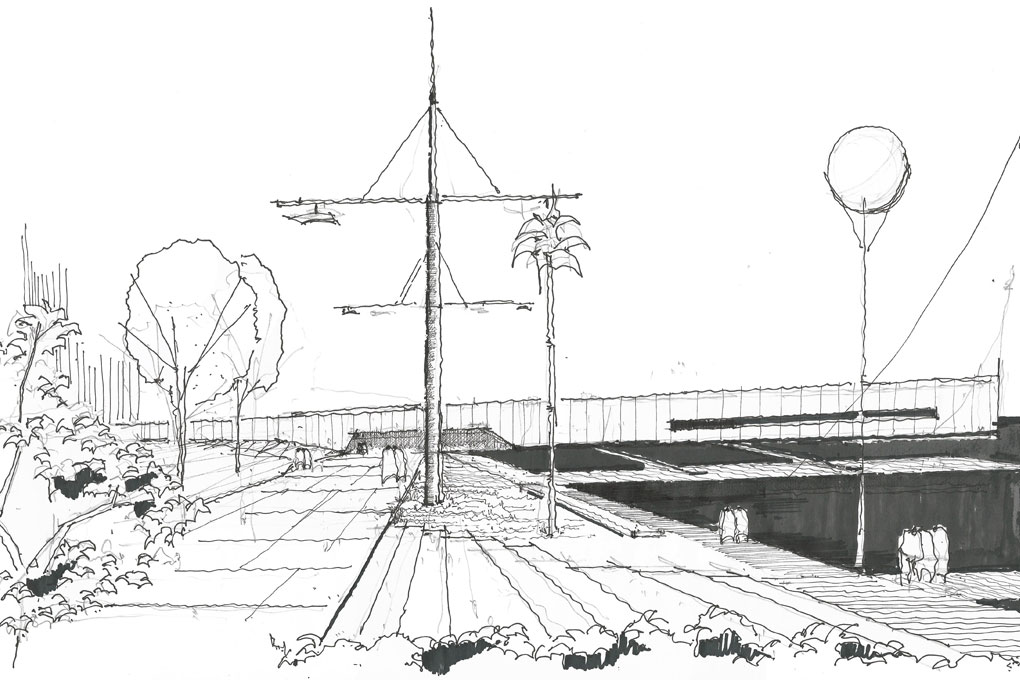
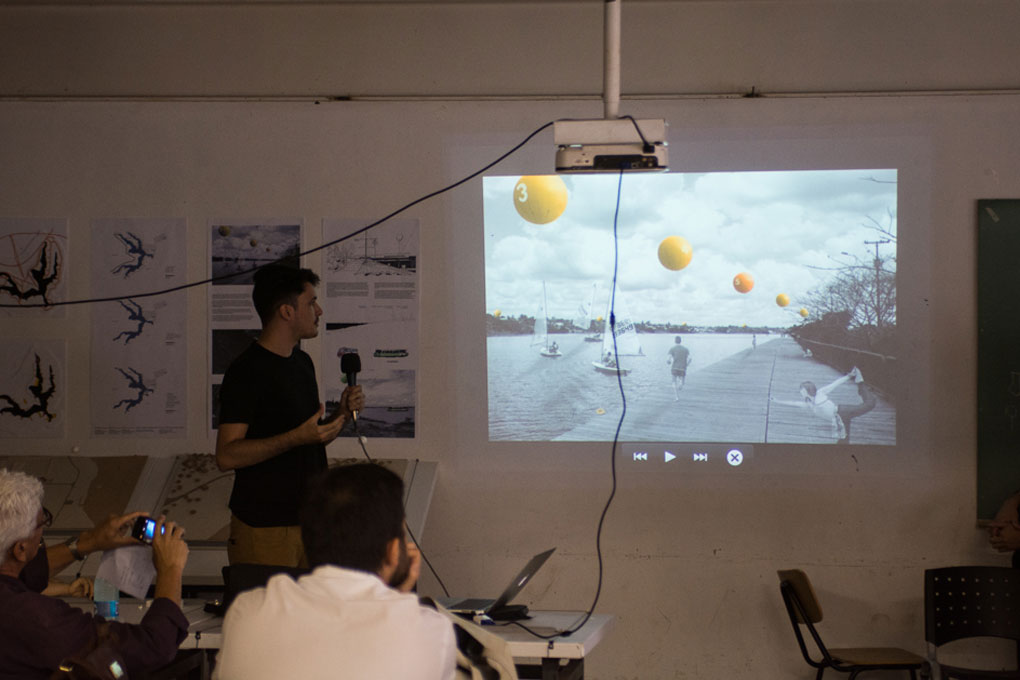
PROJECT WORKSHOP
Time length: 4 dias
Place: Universidade de Brasília, Brasília-DF, 2016
Breaking down (in)visible barriers
“The lake and the city are not connected.” This realization came easily. We set off immediately for a diagnosis that would indicate more clearly how this problem could be overcome. The analysis led to the conclusion that the immediate surroundings of the lake, its edge, become inaccessible by two types of barriers: the physical and the invisible. Physical barriers were identified as solid barriers and porous barriers, two categories that mark potential permeability and intervention. Invisible barriers were associated primarily with the difficulty of access by public transport, an issue linked to socioeconomic stratification and segregation, easily surpassed by the population with higher incomes.
It was concluded, therefore, that the objective should be to integrate the lake with urban daily life, with special attention to the populations most affected by the physical and invisible barriers that distanced them. How to do it? Using public transport as a driving force and main action vector and using elements and visual landmarks that would allow a reading and visualization of the location, extension and points of access to the lake … ”
Tutoring Architects: Igor Campos (MRGB) e Matheus Seco (BLOCO)
Students: Brenda Carvalho, Lucas Brasil, Douglas Menezes, Maiara Breves, Douglas Duarte, Melissa Melo, Fernando Longhi, Paulo Victor Borges, Izabela Brettas, Raquel Maciel, Karoline Cunha, Sophia Rabelo, Larissa Lopes